Cribbage Board Collection part 5
A collection of antique and vintage Cribbage Boards by Tony Hall, part 5: Advertising
Cribbage Board Collection - part 5
by Tony Hall
There are a great many varieties of Cribbage boards made from leather. This includes the tiny travel version (left), complete with metal pegs and recorded by the American Cribbage board guru, Bette L. Bemis, as being used by soldiers in WW1. Also, one of my favourites is probably at least WW2 vintage and may even itself date from WW1.

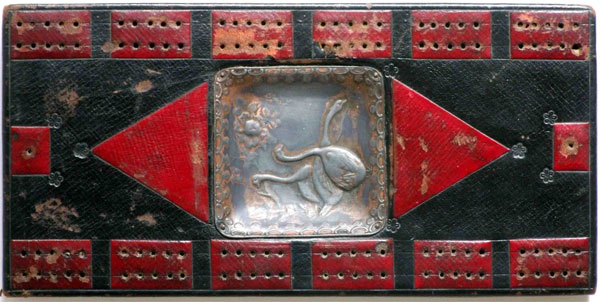
Above: elaborate example (complete with central ash tray), almost certainly Anglo-Indian, probably dating from the 1920s. From the collection of Tony Hall.

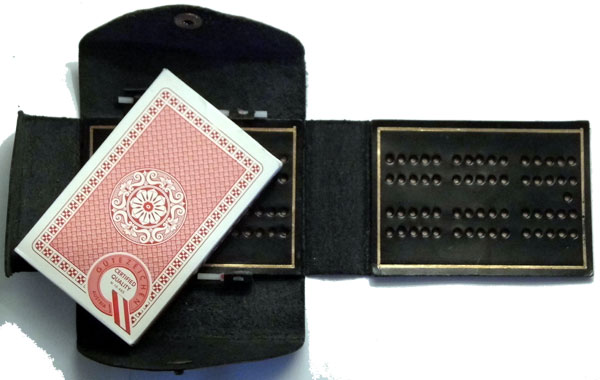
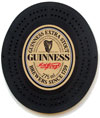
Advertising - Beer, tobacco & matches
One of the most common types of board was designed for advertising purposes, and these were widely distributed to pubs and clubs. The oldest in my collection is probably this one, advertising matches (frequently used in pub crib boards instead of lost pegs). (Click Guinness board to zoom)→
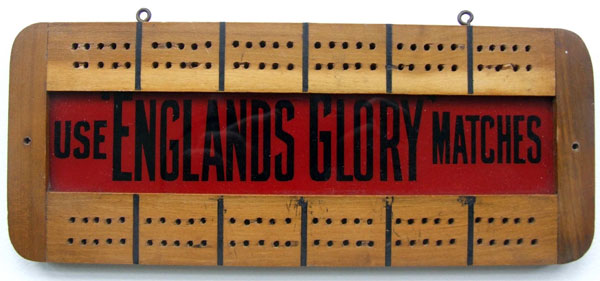
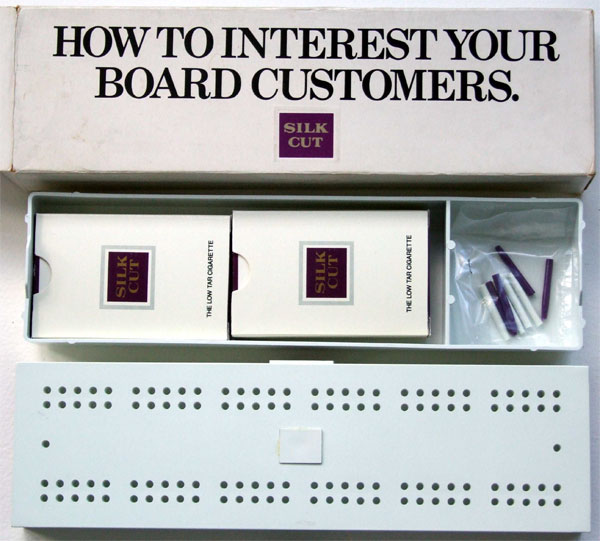
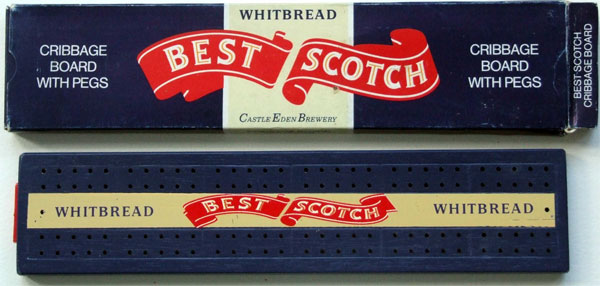
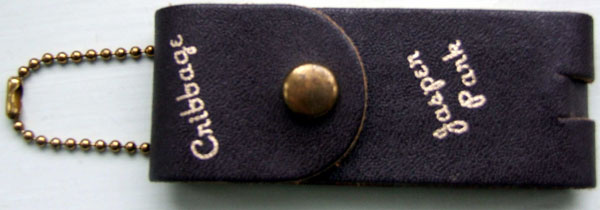
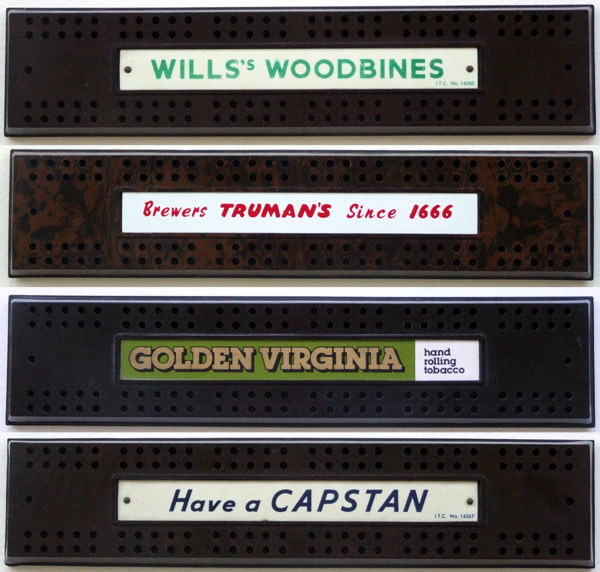
Above: Bakelite was much used from the 1940s/50s and one standard model was used by a wide variety of tobacco brands. Some used other materials such as Perspex or wood (below). Others still were more elaborate with double card or domino boxes (left). The smallest in my collection is in the form of a key ring advertising Jasper Park, Canada.
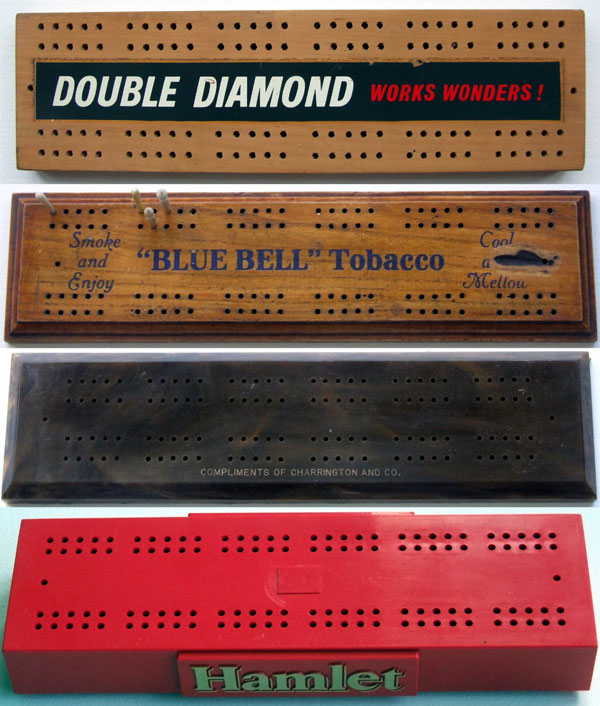
Above: From the collection of Tony Hall.
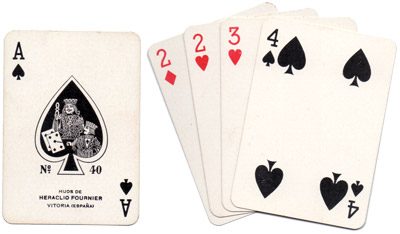
Above: The four card hand comprises a “double run”, always worth 8 points, that is two runs of 2,3 and 4 each worth three points, and two for the pair. As the up-turned card is an Ace the five card hand constitutes “a double run and one” (each run is now of four cards) – always worth 10 points, and more if any of the combination of cards add up to 15.
There have been many attempts in more modern boards to move away from the traditional scoring shape of 30 hole parallel tracks. The most common of these are the varying types of continuous track. Probably the earliest in my collection is a Drueke “Club Master” board, no.1957 made in the USA in the 1950s/60s. But others abound, and range from the reasonably small to a much larger range catering for three or four players. Alternately, you can play on a long track China-made board, with 60 holes in each track length.
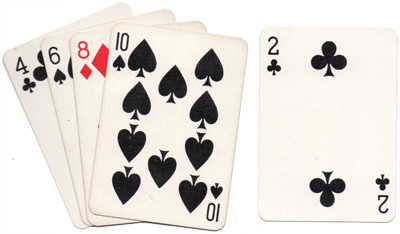
Above: this hand looked promising before the fifth card was cut from the pack, but even with that is worth absolutely nothing – no 15s, no runs and no pairs!
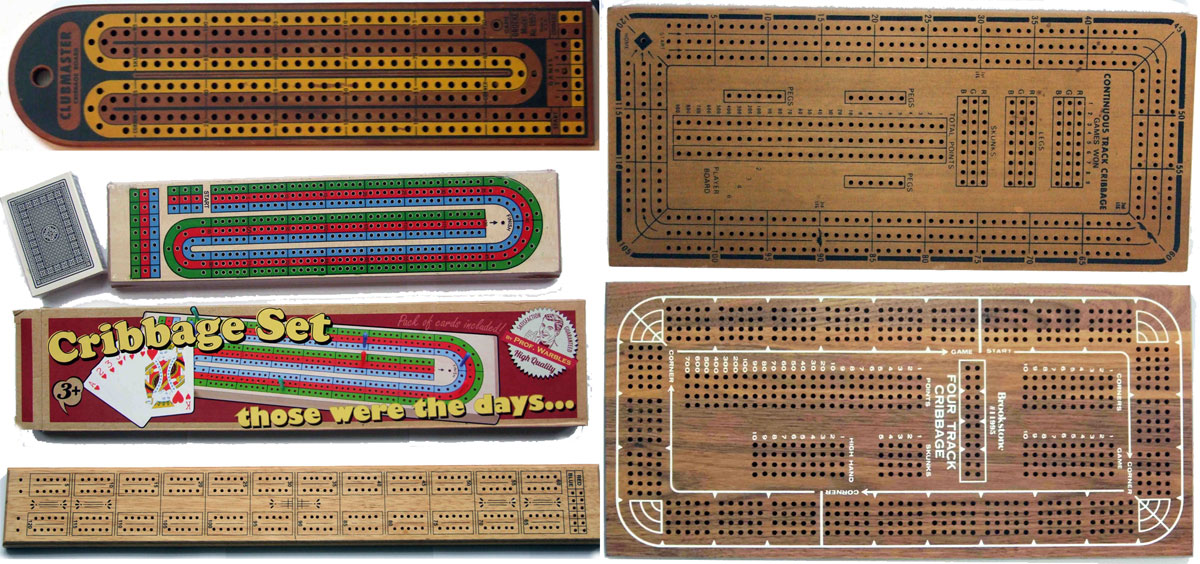

Above: From the collection of Tony Hall.


By Tony Hall
Member since January 30, 2015
I started my interest in card games about 70 years ago, playing cribbage with my grandfather. Collecting card game materials started 50 years or so later, when time permitted. One cribbage board was a memory; two became the start of a collection currently exceeding 150!
Once interest in the social history of card games was sparked, I bought a wooden whist marker from the 1880s which was ingenious in design and unbelievably tactile. One lead to two and there was no stopping.
What happened thereafter is reflected in my articles and downloads on this site, for which I will be eternally grateful.
Related Articles

OXO Faces of the Millennium Dinner
Twentieth-century personalities promoting a millennium dinner at the Oxo Tower in London.

Pathé Marconi
Special promotion pack for French record company Pathé Marconi.

Kids Fun Box playing cards
Colourful cards for children with four non-standard suits connected with the natural world.

Tangle Foot Ale
Badger Brewery Tangle Foot strong ale advertising pack.

ViVa Bourg
A distinctive deck of cards for a specific promotion.

Dancing
“Dancing” playing cards manufactured by Nintendo for Torii Dance School, Osaka.

Scientific Whist
“Scientific Whist” : standard cards with instructions for play on the faces by Chas Goodall & Son, 1...

Agent Provocateur
Branded lingerie collection in a pack of pin-up playing cards.

Shin-Tōmei Expressway Opening Commemoration
Promotional playing cards for the Shin-Tōmei Expressway, a major Japanese expressway that opened in ...

Nimbus playing cards
Mike Steer’s weather-themed pack with suits in four colours and backs for cardistry.

Agatha Christie and Playing Cards revisited
Agatha Christie uses card-play as a primary focus of a story, and as a way of creating plots and mot...

The Decadent Deck
Studies in the eroticism of the female body by Inge Clayton.

Historic Shakespeare
“Historic Shakespeare” playing cards featuring Shakespearean characters by Chas Goodall & Son.

Copechat Paramount Sorting System
Preserving the past: a specimen deck showcasing edge-notched cards and their ingenious sorting syste...

Heartsette by Herbert Fitch & Co, 1893
A glimpse into a busy print and design office in late Victorian London.

Intersigma
A Czech advertising deck for a company dealing with pump technology.
Most Popular
Our top articles from the past 28 days

